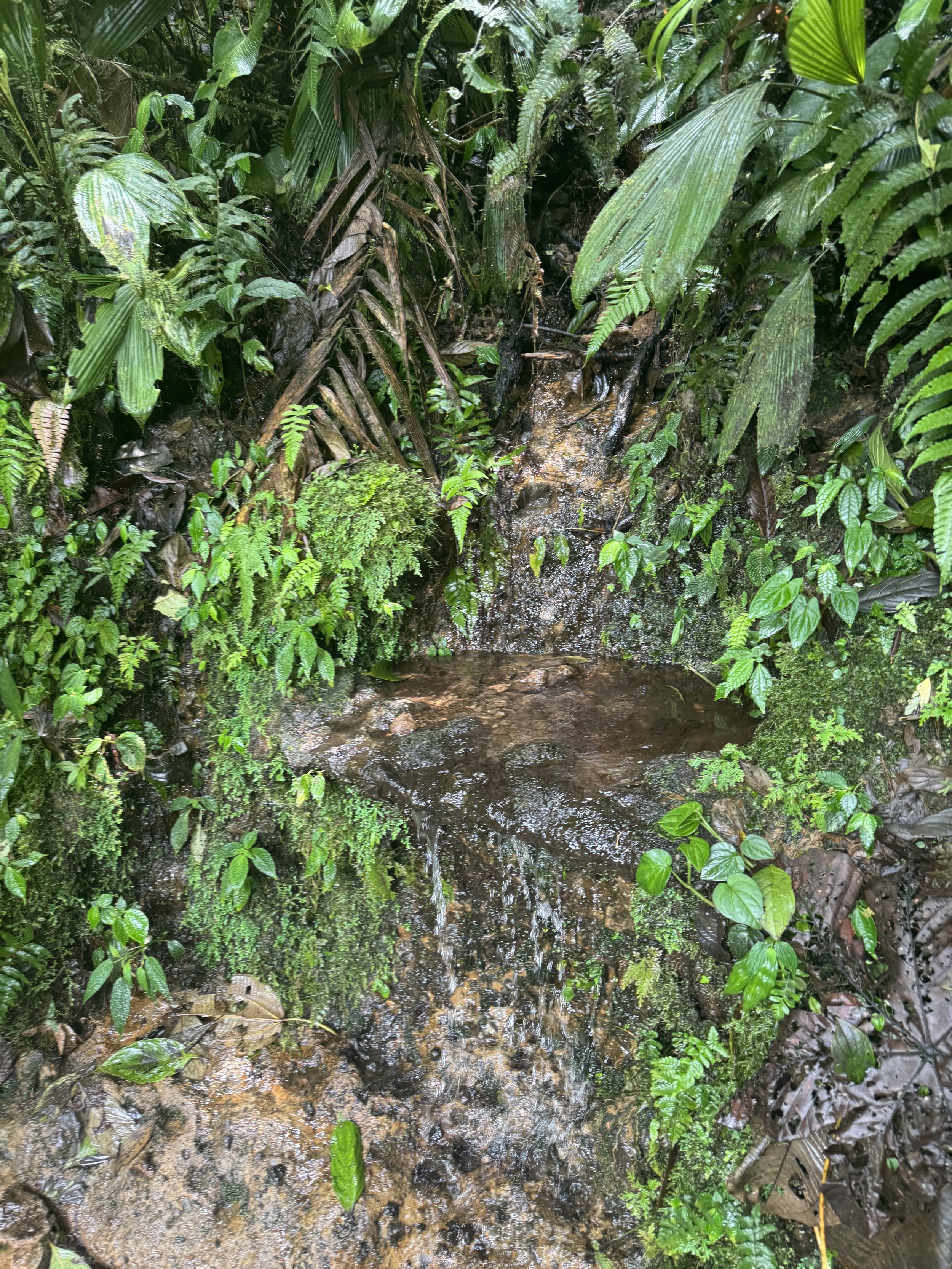
Ferns have existed for nearly 350 million years. They were among the first land plants.
Their general appearance has changed very little. Some ferns no longer exist, and others evolved into what we see today - some 10-12,000 species growing on all of the continents
except Antarctica.
The ferns that are grown in South Florida are the subtropical and tropical ferns. There are ferns whose climates are cooler and drier, but these ferns, for the most part, will only grow in that specific habitat. Many tropical growers have tried, unsuccessfully, to cultivate many of these plants, but because of cellular structure of these plants, they simply are not suited to the tropics, as our ferns are not able to grow in northern climates.
Many ferns today can be found in various rainforest around the world. To accurately describe ferns, we place them in categories. One important category is that of place of origin. Ferns are classified as either new world or old world species. The new world species, or neotropical plants are those that are western hemisphere plants. The old world species are Asian, African, etc. South Florida is able to grow both classifications of plants with relative ease. However, there are some plants that simply will not grow here due to a variety of reasons. Altitude plays a significant role in what is able to grow here. South Florida on average is perhaps
6-8 feet above sea level. However, some of the plants we enjoy are from regions that are lowland mountain rainforests.
These plants are adaptable and will thrive here. It is theorized that plants collected below 3,000 feet have a better chance of survival than plants coming from higher altitudes. Soil type is another important ingredient to ensure the viability of a fern. Another ingredient would be temperature. It is not that the ferns won't be able to tolerate excessive heat during the day, the problem is that ferns generally need a break from the heat and this normally happens with lowered nighttime temperatures.
Our South Florida nights, on occasion, will rival the daytime temperature. This however, is not an impediment to growing ferns from different tropical regions of the world. Many ferns do survive and have adapted to our warm evenings.
South Florida is home to some spectacular species and today many more are being introduced through modern collectors. The plants are cultivated from either actual living material, divisions, or spores. There does appear to be a movement to cultivate many species who's habitats are quickly disappearing.
As the population of the world expands, unfortunately, there are limited areas for man to move into. In some countries the forests are quickly disappearing in order to make room for development. This in turn means a loss of habitat for flora and fauna. As the canopy disappears, so will all of the understory that depended on the canopy. As the understory disappears, so will all of the wildlife that in turn relied on it.
Ferns and other plants are in danger of losing their basic habitats and there is little that can be done to ensure their survival. While there are regulations aplenty, true enforcement is lacking. Also noteworthy would be lack of education as to what we are losing.
However, the ferns that are discussed here are ferns that are in cultivation and hopefully more will be introduced. It is a big world out there and everyday, as we venture into more remote and uninhabited areas, new discoveries are bound to be made.

















